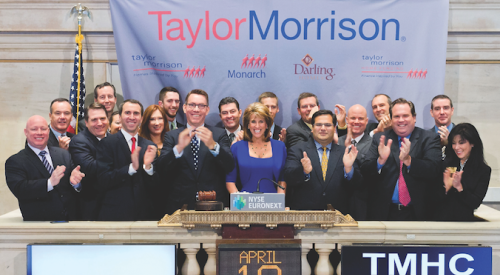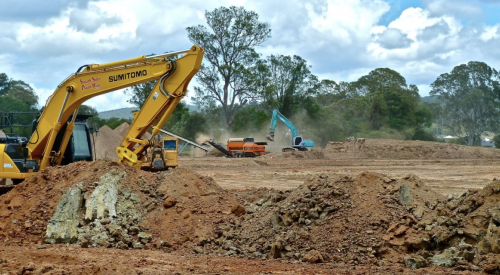|
|||||||||||||||||||||
With 18 of the top 20 builders traded publicly, this elite group merits a separate discussion not only for the magnitude of their operations and industry leadership, but also because they are, to a degree, aligned around the needs of a different kind of buyer: the Wall Street community.
To succeed with investors, these builders, whose 220,862 closings last year represent more than 43% of the total for all Giants, must put their best balance sheet forward. This is not always easy to do given the industry’s capital- intensive nature. Successful public builders often have tens of thousands of lots in the pipeline. This is tangible evidence of an executable growth plan, but investors don’t want to see a lot of land on the balance sheet. It hurts return on investment.
“It is a difficult situation where you need to have lots out in front of you and yet you cannot afford to put them on your balance sheet and also maintain the returns that investors like to see,” says Dan Fulton, who took over as CEO of Weyerhaeuser Real Estate Co. last year. Weyerhauser, which sells homes under the banners of Pardee Homes in California, Nevada and Arizona, Quadrant Homes in the Northwest, and three other names in Texas, Maryland and Virginia, had $1.24 billion in revenue on 4,151 closings last year.
“You have to strike a balance between land ownership and land options,” Fulton explains. “And if you option everything, then you keep it off the balance sheet, but in doing so you limit your returns because you are just competing with everybody else.”
The largest Giants don’t like to compete with everyone else for land. Why else be big?
Land also is the primary focus of Chad Dreier, CEO of The Ryland Group, a national company that has grown largely through internal means rather than through acquisitions. Last year the firm had $2.64 billion in revenue on 12,686 closings.
Dreier says he signs off on every land deal and makes sure each investment pencils out to an internal rate of return of at least 30%. He is also keen on spreading investment dollars to all Ryland markets for the sake of stability, which often means taking a pass on deals in the company’s home state of California.
“The risk-reward relationship in California is pretty screwy,” says Dreier. “We can’t option much California land, but we can option all of it in Indianapolis.”
Not every member of the top 20 must hold itself up to public scrutiny. Shea Homes, with $1.66 billion on 5,563 closings and David Weekley Homes, with $937 million on 3,412 closings, are private. Outgoing Shea Homes CEO Roy Humphreys credits much of the company’s success during the past few years to its prowess as a big developer, buying land outright and taking it clear through the entitlement process. The company plans to stay private as long as it retains its land-development focus.
“It is too nice being private in this industry. You can focus on being a builder only. You can take a longer view,” says Humphreys, who after 20 years is turning over the company reins to former Colorado division president Bert Selva. “In any of our major projects, land planning is done in excruciating detail. We are looking at how we can best serve different buyers within the land plan, and you can’t do that well if you are under the scrutiny of comparative analysis of inventory turns and all of that.”
NVR Inc. is the complete opposite. It repeatedly re-minds analysts that it owns no land and has not since it re-structured in the early 1990s after being caught in a down market with too much land on its books. Today it is a darling of Wall Street primarily because it turns its inventory five times a year — a reflection of fast cycle times. NVR’s recent success is a reminder that the top 20 builders are astute at more than controlling land. With an average profit of 11.8%, they are also efficient in their operations.
At a New York investment conference last month, Toll Brothers CEO Bob Toll went to great lengths to make this point. And with builder stock prices so high, there is a good chance he was heard.
“Toll Brothers and the industry as a whole seem to have skipped the recession of 2001 and 2002,” Toll told investors. “And the economy is improving, or so we’re told, so the best is yet to come.”












